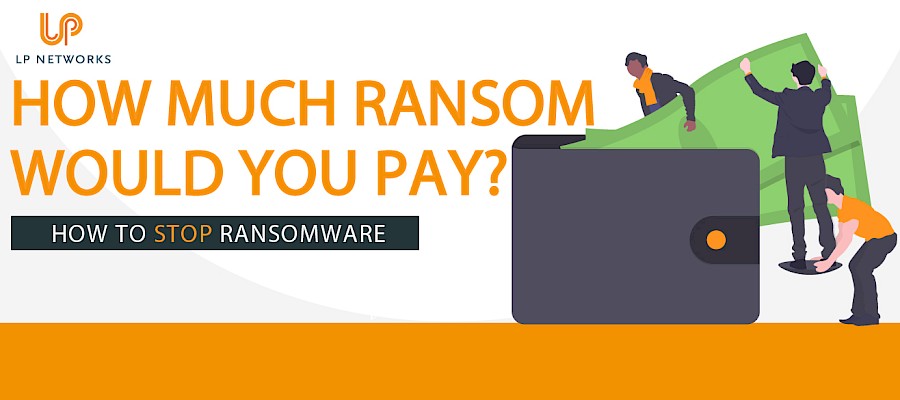- Solutions For
Specialist IT Support Services for:
- Popular Services
- Security
Security
- Our Expertise
Our Full Range of IT Services
- Learn
- About Us
- Contact
Posted 21st October 2021

Imagine that you arrived to work one morning to discover that your whole IT system had been encrypted and that you were being asked for a ransom to gain access again. Quite a worrying and scary scenario and, unfortunately, one that has happened to millions of businesses over the last few years.
In mid-2021, the REvil Group (a ransomware collective) announced that their malware had hit over 1 million systems and demanded $70 million in Bitcoin to release a universal decoder key. Unfortunately, their announcement wasn’t something to ignore and some companies, such as COOP in Sweden, had to temporarily shut their doors while they responded to the crisis. This article is far from being about scaremongering; it is reality, and sadly some businesses never recover from a ransomware attack.
The reason that some don’t survive isn’t solely based on the cost of the ransom; there are many other factors involved. You see, once an IT system has been breached, you can’t really trust your infrastructure anymore. To put it differently, if someone broke into your home using your front door key, would you leave your door locks as they are or immediately replace them? Even if the burglar were caught, how could you guarantee that there weren’t other keys floating about?
It works the same with IT infrastructures. So, if your system is hacked, how can you be sure that once it’s back up and running, that all the hackers ’code has been removed or that there isn’t something still lurking in the depths of your system waiting to collect data or wipe you back out again? You can’t.
A ransomware breach costs far more for a business than the money that’s demanded by cybercriminals. You also have to factor in the cost of closing the doors of your business, damage to your reputation, potential fines from the ICO for a data breach, and the cost to replace your entire IT infrastructure.
That’s why businesses must think ahead and consider what they can do to prevent an attack from happening. Cyber Essentials certification is an excellent step to take because to be compliant, you have to prove that you meet certain cybersecurity best practices. These include ensuring that your business has good firewalls and anti-viruses in operation and that all of your team are trained in recognising potential cyber security threats.
Just like an MOT, you need to re-certify every year. The bonus of this is that maintaining continued compliance means that your business is constantly working with best practices to provide your business with cyber security measures that are working hard to keep your IT infrastructure safe. Things like password hygiene (where you regularly change passwords) can often be overlooked and is akin to leaving your doors wide open to criminals.
If you’d like to find out more about how you can protect your business by becoming Cyber Essentials certified, get in touch.

